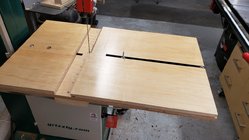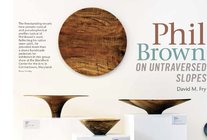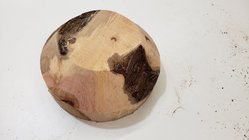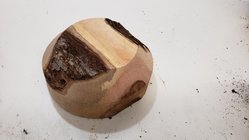I had a jig for cutting blanks into circles. Can save turning time, but had some shortcomings. Many logs are too small to get a large flat and the curve of the log makes roughing harder because of the air time and uneven surface.
My buddy had an idea to cut at an angle to remove more material for easier roughing, so I built it. The idea is the side of the jig where the log pivots can tilt.
Use is cut the blank like normal. Then move the center out (how much depends on blank diameter), and re-cut at an angle.
Here is the blank already cut level. The center has been moved out in preparation for the angle cut.
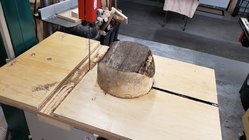
Here is the blank tilted just before the angle cut:
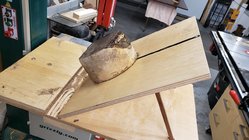
Here is the finished blank:
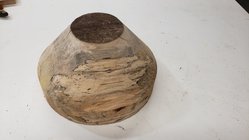
Here are a few cut and wrapped till I get to them:

--sdc
My buddy had an idea to cut at an angle to remove more material for easier roughing, so I built it. The idea is the side of the jig where the log pivots can tilt.
Use is cut the blank like normal. Then move the center out (how much depends on blank diameter), and re-cut at an angle.
Here is the blank already cut level. The center has been moved out in preparation for the angle cut.

Here is the blank tilted just before the angle cut:

Here is the finished blank:

Here are a few cut and wrapped till I get to them:

--sdc

